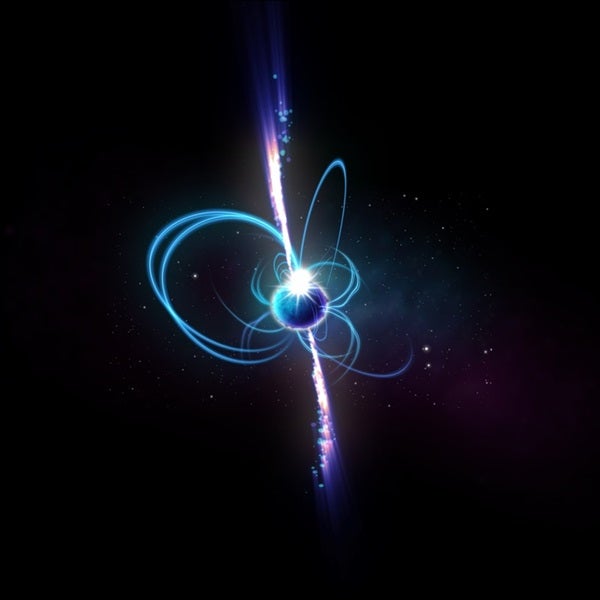About 4,000 light-years from Earth, an astral entity released a large flash of radiation three times an hour, each for a minute at a time, taking researchers by surprise.
“This object was appearing and disappearing over a few hours during our observations,” said lead author Dr. Natasha Hurley-Walker in a press release. “That was completely unexpected. It was kind of spooky for an astronomer because there’s nothing known in the sky that does that.
About every 20 minutes, the object becomes one of the brightest radio sources in the sky. Likely a neutron star or a white dwarf — the dense remains of formers stars — the object also emits highly-polarized radio waves. The study was published in Nature Jan. 27, 2022.
If that wasn’t interesting enough, Hurley-Walker also suspects the object also might have a high amount of magnetic energy which would put it in the running to be an ‘ultra-long period magnetar.’
Bridging the gap
Magnetars are the most magnetic objects in the universe. Their magnetic fields are over a thousand trillion times stronger than Earth’s. Like their less magnetic cousins, pulsars, magnetars are known for emitting bursts of radiation. But where pulsars tend to be reliable with their pulses, magnetars are a bit more erratic. Some of this erratic behavior can be seen in fast radio bursts (FRB), sudden and intense explosions of radiation, which have been traced back to magnetars.
But how young magnetars reach the stage of being able to produce FRBs is a mystery. One solution is ultra-long period magnetars, which could bridge the gap.
“It’s a type of slowly spinning neutron star that has been predicted to exist theoretically,” said Hurley-Walker. “But nobody expected to directly detect one like this because we didn’t expect them to be so bright. Somehow it’s converting magnetic energy to radio waves much more effectively than anything we’ve seen before.”
These transients — objects that turn on and off — are not new to researchers, however transients can often be described as slow, appearing over a few days and disappearing within months, or fast, which appear for a brief second at a time. This strange object did neither, emphasizing its uniqueness.
According to Hurley-Walker, “more detections will tell astronomers whether this was a rare one-off event or a vast new population we’d never noticed before.”










